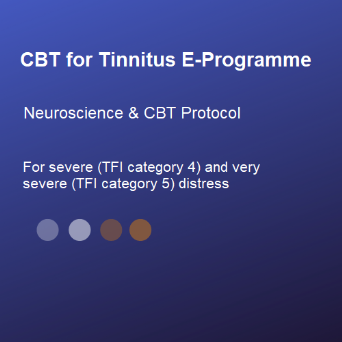The objective of tinnitus management is to change tinnitus from being a problem to being something you hardly notice and doesn't bother you
The changes that people experience through working with me meet that objective. I measure change by using the THI (Tinnitus Handicap Inventory) and since mid 2012, the Tinnitus Functional Index. Additionally, I use measures (Beck Inventories) for anxiety and low mood / depression
Here are some typical THI Outcomes for patients who have completed a course of Tinnitus Management with me:
Patient | Initial THI Score | Final THI Score | Difference/Outcome |
A | 74 | 34 | -40 |
B | 40 | 14 | -26 |
C | 52 | 14 | -38 |
D | 64 | 2 | -62 |
E | 64 | 24 | -40 |
F | 60 | 4 | -56 |
G | 58 | 18 | -40 |
H | 78 | 10 | -68 |
I | 92 | 12 | -80 |
All of these patients had normal hearing levels and attended between 6 - 12 sessions. They are typical of changes achieved by all patients who complete a course of Tinnitus Management with me
Using the THI score categories below, of the 9 examples, we can see how many categories these patients have improved by:
H & I (2) : "catastrophic" > "no distress" (max. possible 4 categories)
A (1) : "catastrophic" > "mild distress" category (3 categories)
D & F (2) : "severe" > "no distress" category (3 categories)
E & G (2) : "severe" > "mild distress" category (2 categories)
B & C (2) : "moderate" > "no distress" category (2 categories)
Effective Tinnitus Management aims to reduce tinnitus distress by 2 THI categories or more. Where an intial score is 18 - 36 / mild tinnitus distress, it is only possible to reduce by one category
THI scores:
0 - 16 = no tinnitus distress
18 - 36 = mild tinnitus distress
38 - 56 = moderate
58 - 76 = severe
78 - 100 = catastrophic
Assessment, tinnitus management and end-assessment is available throughout the UK and worldwide using Zoom telehealth encrypted video-conferencing
